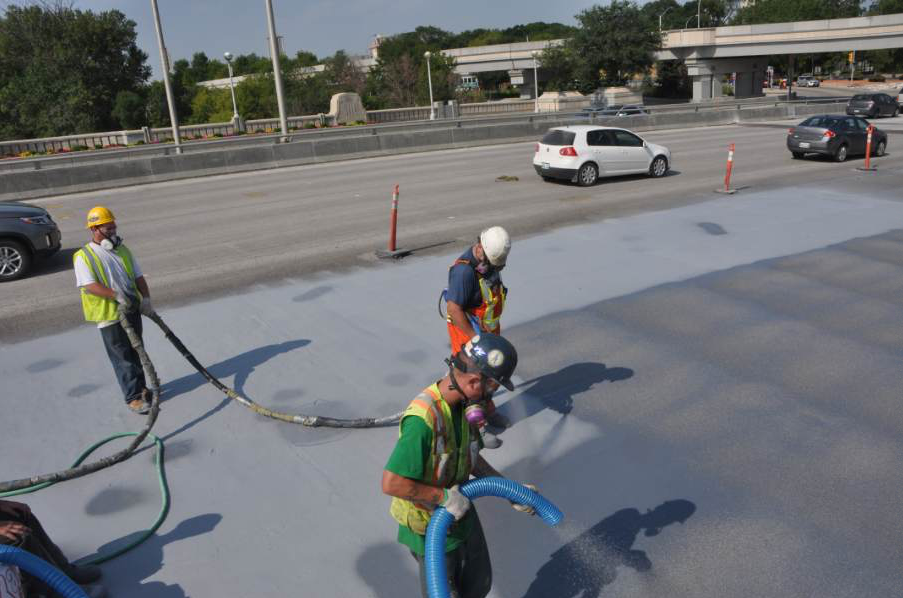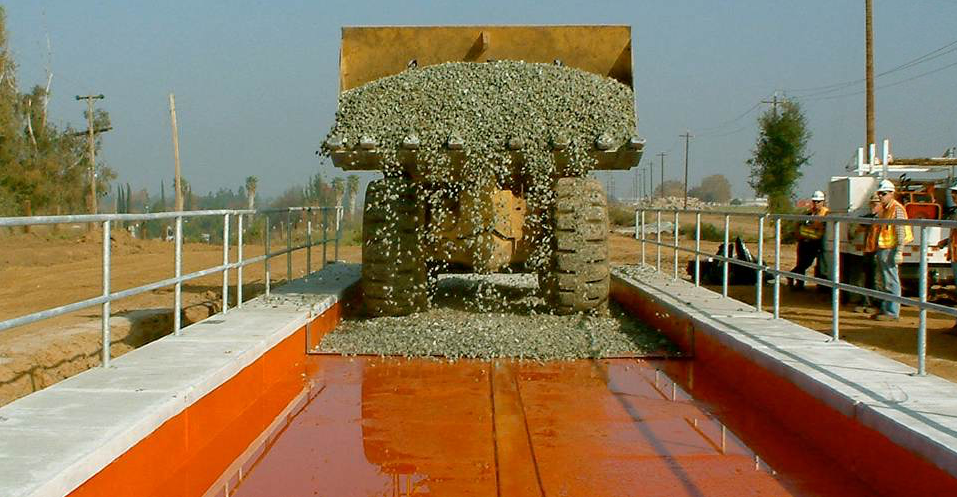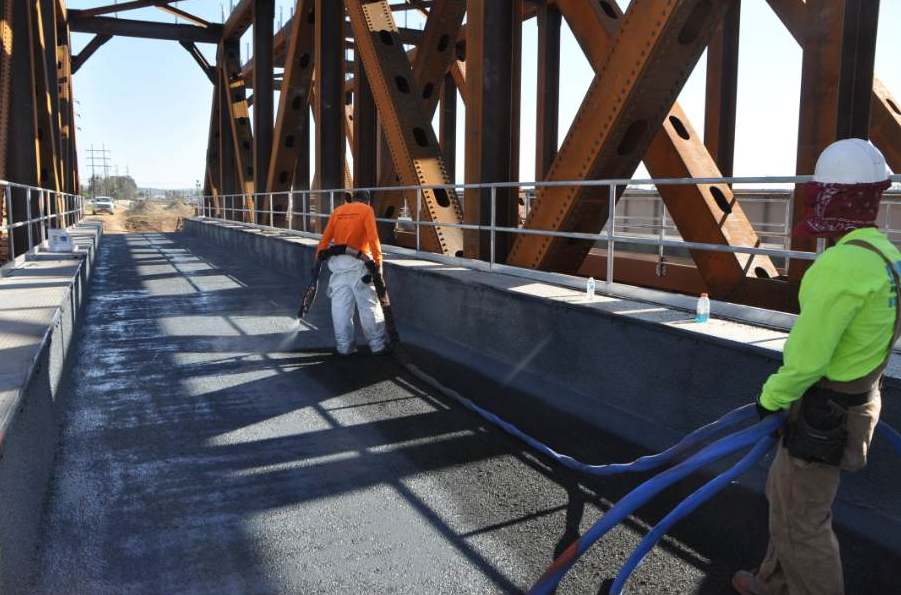Manage Your Bridge Resurface Project
BY Del Williams

It’s a fact that many bridges in America have outlived their intended service life. When waterproofing coatings fail, it leads to a significant corrosion of structural elements, including corroded rebar and crumbling concrete. New waterproofing alternatives have appeared on the market to help civil and structural engineers protect and maintain critical infrastructure ranging from rail, highway, and pedestrian bridges to tunnels, parking decks, airport terminals, and DOT entrance/exit ramps. Let’s take a look at how to apply one such waterproofing technique on your next bridge resurfacing project.
“Spray applied waterproofing now accounts for over 50 percent of the membranes applied to our bridges,” Alexander Bardow, P.E., said. He’s the state bridge engineer for Massachusetts Department of Transportation, a member of AASHTO’s subcommittee on bridges and structures representing Massachusetts, and past president of Boston society of civil engineering section of ASCE. He oversees and helps to prioritize work on 5,000 bridges that receive federal funds for MassDOT.
“What drove us to spray applied waterproofing is its enhanced durability, bonding to concrete, and crack-bridging ability,” Bardow said. He explained: “If cracks form due to deck deterioration or traffic loading, then water gets into those cracks and the concrete matrix. The [underlying] membrane must be pliable enough to accommodate these cracks without failing.

“We expect spray applied waterproofing membranes to last about 30 to 50 years,” he added. “We would still repave and resurface the asphalt overlay, but would not need to do anything to maintain the underlying waterproof membrane during that time.”
“Instead of traditionally sealing bridge decks every five years or so, they could be spray applied waterproofed with materials like BDM (Bridge Deck Membrane by Bridge Preservation) that can last five decades or more,” Traci Micucci said. She’s the president of Eastern Bridge Works, a waterproofing contractor based in Poughkeepsie, N.Y. “That would eliminate repeatedly tearing up the asphalt overlay, resealing the deck and repaving it, plus all the required lane closures. It would stop rebar corrosion and concrete spalling in decks to keep infrastructure safely operating.”
For the project manager with a large job, the spray applied membrane can be sprayed by hand or machine.
“By robot, we can consistently spray apply waterproof over 10,000 square feet of deck per day with BDM at 80 to 85 mils on any surface,” Ted Predki said. He’s the chief estimator and project manager at Pine Waterproofing and Sealant. “[The waterproofing] can set in 10 seconds so you can walk on it,” he said. In Orland Park, Illinois, Pine Waterproofing and Sealant installed nearly 7,000 square feet of spray applied waterproofing on the Metra Bridge over US45 (Structure No. 016-6201), which was originally constructed in 1940 for the Wabash Railway Company.

Pine Waterproofing recently completed a CDOT project in downtown Chicago that involved applying 65,000 square feet of spray applied waterproofing and then returning the road to service as soon as possible. The contractor installed more than 30,000 square feet of 80 mils BDM and 40 mils of top coat with aggregate within seven days, and completed the job within four weeks. Some spray applied waterproofing products can accept temporary traffic or asphalt overlays one hour after application.
For highway bridge projects that involve complicated staging and traffic management, some spray applied waterproofing systems with an aggregate top coat can be used as a temporary driving surface for up to two weeks. This allows large areas of waterproofing to be applied prior to paving, and reduces the number of cold joints for a more durable final wear course. The aggregate top coat also enhances the bond between the membrane and asphalt, adding further long-term performance to the finished system.
“With new spray applied waterproofing technology designed to reliably last decades without ongoing maintenance, civil and structural engineers have a valuable new tool that can help them cost-effectively maintain critical infrastructure while minimizing downtime,” Eastern Bridge Works’ Micucci said.
Del Williams is a technical writer based in Torrance, California. For more information, contact Bridge Preservation at (913) 912-3305 or visit www.bridgepreservation.com.
Sprays Get Tested
Because crack-bridging is critical in ensuring long-term waterproofing protection, many owners require the ASTM C-1305 crack-bridging test for liquid-applied membranes. The test consists of applying the membrane system across two concrete blocks with matching faces. The test sample is then brought down to -15oF for 24 hours to stabilize it at this temperature. The testing requires the two blocks be pulled apart at a rate of 1/8-inch per hour to a maximum opening of 1/8 inch, and then closed to a zero gap at the same speed. The test fixture must maintain the sample at the -15oF temperature through the 10 cycles of testing required.
